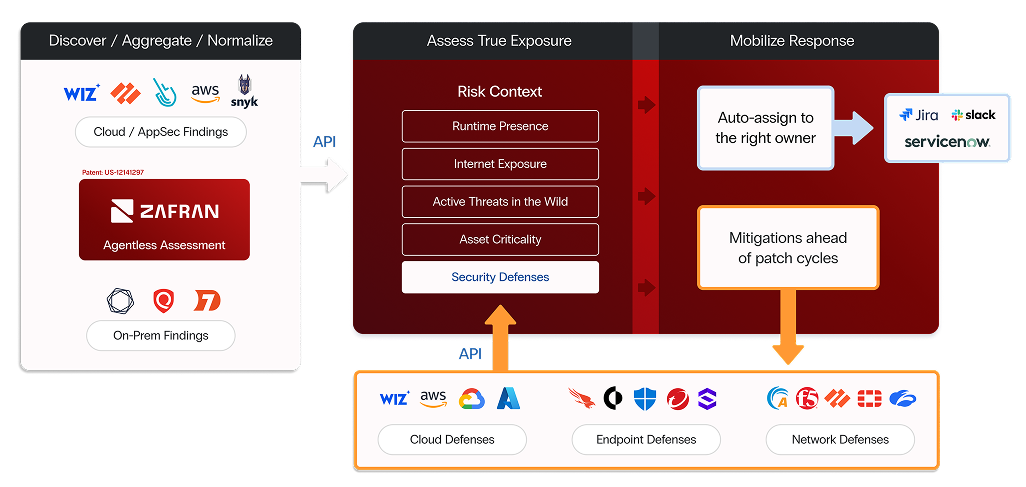Financial Services Leader Reduces Patch Stress and Aligns Remediation with Actual Risk
The customer needed a more mature and defensible way to evaluate and act on vulnerabilities. The security team was increasingly misaligned with remediation owners over patch urgency, particularly when CVSS scores overstated the actual risk to protected systems. With exception workflows growing and zero-day concerns rising, the customer required a more context-aware approach to determine which vulnerabilities truly mattered and which could safely wait.
The Challenge: Prioritization & Remediation Workflow Efficiency
Before Zafran, the customer relied heavily on scanner-generated CVSS and EPSS scores to drive prioritization. However, these metrics didn’t reflect the effectiveness of existing security controls, leading to panic patching, stress, and friction between security and remediation teams. Vulnerabilities on well-defended systems were treated as critical, and patch exceptions lacked structured, risk-based justification. The team needed a way to quantify Applicable Risk™ by understanding how well their existing security investments were actually reducing exploitable risk, and to prioritize remediation accordingly.
The Implementation
The customer implemented Zafran to redefine how risk was assessed across their environment. By integrating with the organization’s vulnerability scanners, network controls, endpoint defenses, and change management system, Zafran provided a more complete picture of actual exploitability.

Zafran enabled the security team to deprioritize vulnerabilities based on live control presence, such as exploit blocks in EDR or network segmentation, and highlight cases where remediation truly mattered. Risk-based context was used to validate patch exceptions and manage expectations between teams. Zafran also supported workflows for CISA KEVs and zero-day tracking, helping the customer focus attention when threats were credible and urgent.
Implementation centered on connecting Zafran with the customer’s scanners, endpoint defenses, and network controls to create a unified risk view. Zafran’s contextual risk models were quickly fine-tuned to align with internal policies and control configurations, while its open integration framework made it easy to extend coverage as new tools were added.
We are able to see the real risk of a vulnerability in our environment. We don't have to 'panic patch' for high CVSS/EPSS vulnerabilities.
VP of Information Security, 1K+ employees
- Created 26 high-fidelity “golden tickets” through Zafran’s RemOps, consolidating and addressing over 3,300 critical vulnerabilities.
- Reclassified high CVSS/EPSS vulnerabilities based on real control coverage, reducing unnecessary urgency
- Enabled structured exception workflows tied to actual exploitability, improving patch governance
- Reduced pressure on remediation teams by aligning SLAs to true risk
Zafran now enables the customer to scale its vulnerability management program without overwhelming teams or overstating risk. The platform’s automated analysis of risk context revealed the most pressing vulnerabilities, cutting CVSS Critical severity noise by 85%. By mapping real-world security posture to patch decisions, Zafran has become a cornerstone of the customer’s risk-based remediation strategy—reducing friction, increasing maturity, and building trust across teams.

Industry
Primary Use Cases
Key Outcome

85%
Zafran reduced CVSS Criticals for the customer by 76%.
See Zafran in action
See Zafran in Action
Prioritize and fix what is truly exploitable using risk context from your existing security tools



